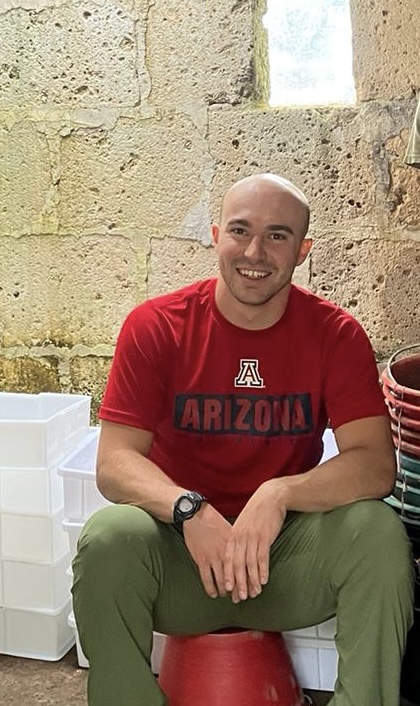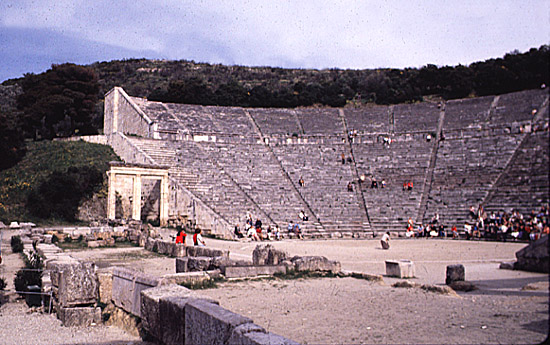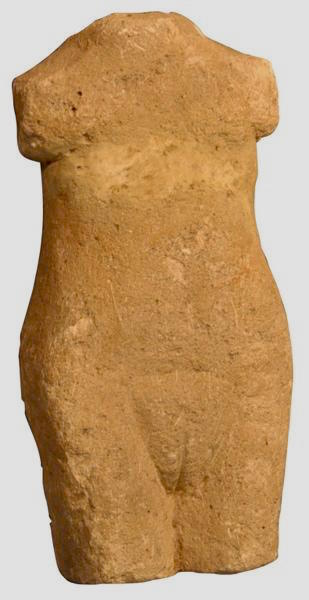| CURRENT RESIDENTS | |
 |
Noah Simmons, M.A. candidate Noah researches maritime networks and social inequality in the ancient Mediterranean. He recently presented his work on the trade value of fine Attic pottery at the 2024 annual meeting of the AIA and is currently working on his MA thesis on the materiality of social inequality in Early Iron Age Crete. He has excavated in Israel, Italy, and Alaska and is currently a trench supervisor at the excavations at an imperial Roman fountain house at Valle Gianni, Italy. |
 |
Julia Juhasz, Ph.D. candidate Julia is a researching Aegean Bronze Age settlement patterns. She works primarily with survey data, with a focus on comparative survey on Crete. She is also interested in archaeological sites and landscapes as cultural heritage, and how people interact with the ancient past. This summer she will begin field work collecting data on the use of ancient Greek theaters in the modern world. |
|
GRADUATED RESIDENTS |
|
|
Nicholas Jones (2023), M.A. |
|
|
Jordyn Purcell (2023), M.A. |
|
|
Savhanna Long (2023), M.A. |
|
 |
Jay Stephens, Ph.D. Provenance, Practice, and Archaeometry My research is focused on applying archaeometric techniques to study material provenance and deconstruct the practices used to make archaeological objects. Currently, I focus on the Iron Age landscape of Southern Africa, which was host to a number of state formation events and became significantly entangled with large trade networks. I use archaeometallurgical, isotopic, and chemical analyses on copper based artifacts to investigate the ties between core and periphery sites on this landscape, and also how ties to the massive Indian Ocean network impacted this relationship. I am also working on projects which use this focus to better understand the Iroquois pipestone industry, Roman tile production, and Greek ceramics and metals during the Late Bronze Age – Early Iron Age transition. |
 |
Alena Wigodner, Ph.D. My research focuses on gendered experiences of colonialism and gender dynamics in colonial contexts, specifically in the Roman West. I am pursuing these questions through analysis of votive objects and votive assemblages, which usefully represent individual and often anonymous acts of dedication. What patterns exist in gendered votive objects (such as anatomical healing votives, shaped to look like the dedicator or part of the dedicators body)? How can we assign a gender to other classes of votive objects? How might we pursue broader insights about gender in colonial contexts using these assemblages? |
|
Benjamin Curry, Ph.D. Cattle in the Garden: An Environmental and Archaeological History of Ranching at Rancho Refugio-Wilder Ranch (2017)
Ben Curry’s research focuses on the role of cattle and sheep ranching in the Spanish colonization of western North America, particularly the colonization of California. Specific topics include the effects of ranching on ecological systems, and ranching’s role in economic, sociocultural, political, and land use systems. Zooarchaeology, GIS analysis, and network and agent base modeling are all a part of this research; which seeks to make use of both the archaeological and historical record. Curry’s experimental work focuses primarily on the analysis of butchery patterns in zooarchaeological assemblages, particular variant forms of bone fracturing, and on analyzing various natural taphonomic processes.
|
|
|
Stephanie Martin, Ph.D. Plinian Eruptions and Population Movements During the LBA Plinian eruption of the island of Thera (Santorini), the city of Akrotiri was entirely abandoned, leaving thousands of refugees displaced. Regional damage extents and social networks are the two major contributing factors for decisions of resettlement locations. In order to identify possible resettlement locations of the displaced Therans, I compare social ties and damage extents to determine communities who were both willing and able to provide aid. |
|
|
Katie MacFarland Religious and Ritualized Landscapes of Iron Age North Central Eurasia (2017) To analyze the subregions of Iron Age (ca. 1000-100 BCE) central Eurasi, density distribution maps of Scythian, Saka, and Xiongnu artifacts with ungulate decoration (e.g., ram, cattle, deer, moose) will be combined with spatial data on location of sites, archaeometallurgical technologies, and the paleoenvironment (Ph.D. Thesis completed 2017). |
|
|
Andrew Stewart Clovis to Folson Technology The transition from Clovis to Folsom technology is important to consider when seeking to understand choices hunter-gatherers made in relation to projectile point strength, functionality, curation and economic multipliers. Paleoindian tool transitions can be seen as adaptations to environment and subsistence. This research explains these questions through behavioral ecology. |
